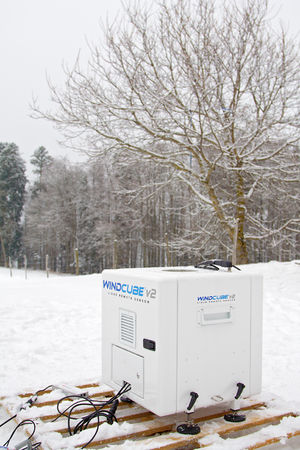Doppler Wind Lidar
Introduction
Active remote sensing methods, particularly Lidar methods, have demonstrated their ability to provide wind measurements through the atmosphere from ground-based and airborne platforms. The Doppler Wind Lidar (DWL) systems fall in two categories: coherent (or heterodyne) detection, and direct detection (or incoherent) systems. A number of detection Lidar techniques for measuring the atmospheric wind field have been developed or proposed over the past several years. These techniques include aerosol and molecular measurements. The aerosol-based wind measurements offer the possibility of high sensitivity measurements in those areas where the aerosol backscattering is high. On the other hand, the molecular-based measurements could provide wind measurements even in those areas where the aerosol concentration is near zero. A DWL is a rugged instrument that meets the requirement of unmanned and unattended operation, with a very high spatio-temporal resolution. Some commercial available coeherent systems provide measurements with a temporal resolution of about 10 s and spatial resolution of 50 m measurements of the full wind velocity vector and backscatter within the atmospheric boundary layer.
